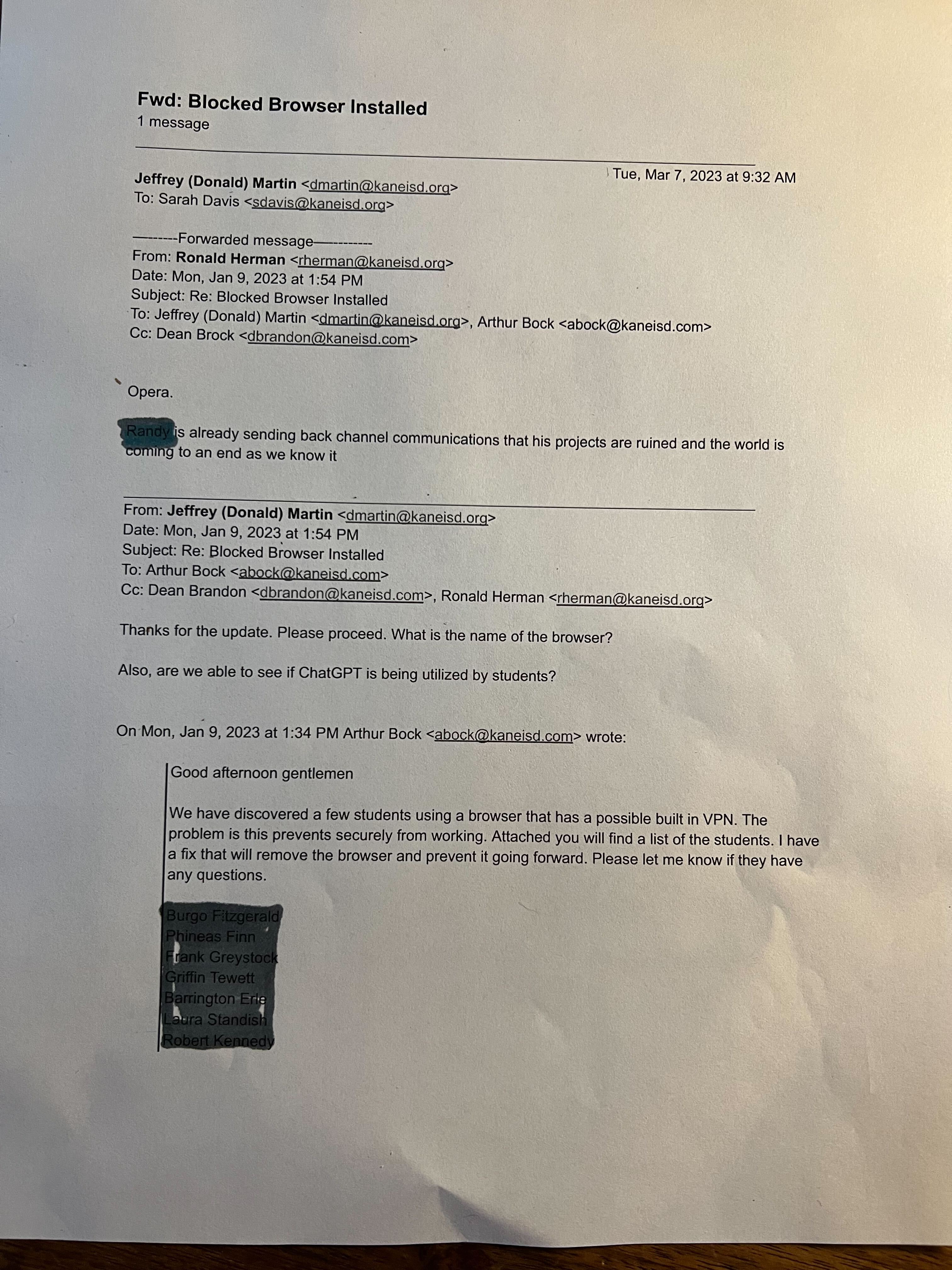Several weeks ago, Motherboard filed public-records requests with a number of schools across the United States seeking records and documents describing the schools’ efforts to grapple with the sudden availability of ChatGPT in classrooms.
The responses, which are still coming in, have been enlightening, and generally show conscientious educators operating in the awareness that gussied-up autocomplete robots hastily built by Stanford drop-outs who list “Founder” as their ethnicity on government documents are not necessarily a grave threat to the republic, or even the youths, who are our future. Many of the documents show teachers and IT staffers explaining to colleagues that blocking a website or app on school networks will not prevent students from using it; many others show teachers planning to educate students about how if they choose to use a gussied-up autocomplete robot rather than reading, writing, and/or thinking, it will ultimately be their problem.
Videos by VICE
One Texas school, though, went above and beyond by not only providing an email thread in which staffers discuss the possibility that several students are using a browser with a built-in VPN to access ChatGPT, but performing the most inept redaction of the students’ names they possibly could.
Redactions are an ordinary feature of documents returned under public-records requests. (Unfortunately, comic redactions of material that clearly shouldn’t be redacted are as well.) Usually, they’re done by drawing a black box on top of material using commercial editing software; occasionally, and to the delight of journalists and researchers, they’re done by drawing the black box in such a way that it can be removed using commercial editing software.
This redaction, which we are not publishing to protect the identities of the clever students, appears to have been done using a grey Crayola marker that was running out of ink. This shouldn’t be taken as a criticism of the redactor’s laziness; as the detail at the top of this post shows, they were not lazy at all, and really pressed down hard on the marker, scribbling back and forth and up and down and doing some nice cross-hatching, all in an attempt to obscure the names of the minors.
Unfortunately for them, the names of the 10 students using the browser with a built-in VPN are easily readable, because for as much effort as the redactor expended covering these names up, they used a very light-colored marker. In an attempt to get the general impression across, a Motherboard staff artist has recreated the document, altering the names of all people and institutions involved partly to protect their privacy and partly to throw rival reporters suddenly inspired to see what kind of poorly-redacted documents they might be able to get from this school off the trail while we ourselves see what we can get:

More
From VICE
-

Christoph Wagner/Getty Images -

Illustration by Reesa. -

-

Malte Mueller/Getty Images
